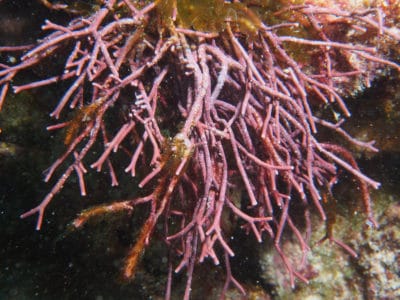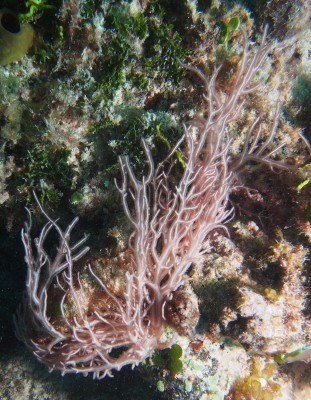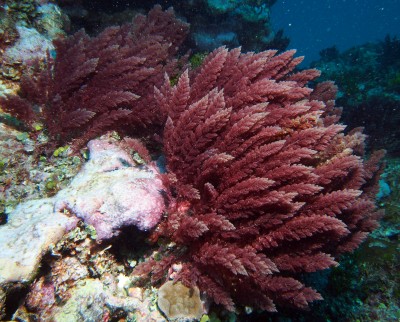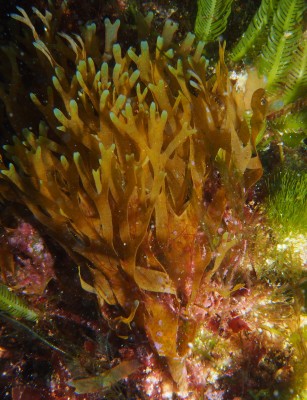The average person doesn’t get too excited about algae, which most know as seaweed. It smells when it accumulates on the beach and rots, it can outcompete coral when left unchecked, and it’s generally considered bad for reefs, especially when they undergo a phase shift from a coral-dominated reef to an algal reef. They are a very important food source for many invertebrates and fishes, and even for people. Many species are cultivated. There are many products extracted from this amazing seaweed as well – agar which is used as a gel in various foods and a culture medium for scientific studies; agarose is used by the pharmaceutical industry for separation and purification of many products; and carrageenan used in chocolate milk, ice cream and other foods for gelling, thickening, and stabilizing. Extracts from algae are also found in skin care products, make-up and toothpaste.
There are several algal groups. We look mostly at benthic algae which encompasses the red algae (Rhodophyta), green algae (Chlorophyta), brown algae (Phaeophyta) and blue-green algae (cyanobacteria). Like plants, they need sunlight to produce food. Unlike plants, they lack roots, vascular tissue, flowers and many other features common to plants.
During our surveys, we assess how much of the bottom is covered in seaweed, dividing them into the beneficial crustose coralline algae, turf algae, macroalgae (fleshy seaweeds) and cyanobacteria. We also look at interactions between the seaweed and corals, grazing on seaweed by herbivorous parrotfish and surgeonfish, and how they vary depending on human impacts.
Studying Benthic Algae at Ill des Pins
Ile des Pins is the perfect place to study the fleshy seaweeds. On most lagoonal reefs we’ve looked at, more than half the bottom is carpeted in these macroalgae. Many are quite colorful and each has a unique growth form.
Among the Chlorophyta, Caulerpa is one of the most common groups we see. These can easily be identified by their creeping stolons (horizontal stem that connects algae) and numerous upright branches, some with grape-like vesicles; others resemble a feather, a disc, or a club.
Green Algae: Caulerpa and Asparagopsis
The Rhodophyta we’ve found are very diverse. Some, such as Tricleocarpa are erect, branched and heavily calcified.
Red Algae: Tricleocarpa
Others are very gelatinous and transparent, with a distinctive white calcified inner region, such as Trichoglea.
Tricleoglea
Among the most common, and largest of the seaweeds we’ve seen, Asparagopsis forms clusters of pinkish foxtails that can be 30 cm or more in height.
Asparagopsis
The Phaeophyta include some with flattened fleshy branches such as Dilophus, and others such as Padina have round fronds with concentric rows of white calcium carbonate.
Brown Algae: Dilophus
The unusually high number of species and the dense carpets of macroalgae found here make this a perfect place to study seaweed, which is what one of our scientists, Claude Payri, is up to. You’ll hear about her work shortly.
Photos: 1-5 by Andrew Bruckner




